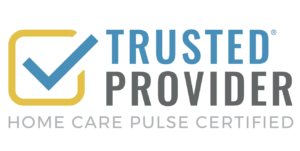Millions of elders and older adults fall victim to various scams and financial fraud each year. From bank account information to social security numbers, thieves can target a variety of different financial and personal information. According to the FBI, the over $3 billion a year being lost to scams targeting older adults is only going to increase due to a growing elderly population. Knowing the common signs and types of scams, how to protect yourself and your family’s assets, and understanding the correct ways to report these attempts can help keep you safe.
Recognizing Common Scams
Oftentimes, a scam or fraud begins with a stranger attempting to impersonate a close relative or loved one. On many occasions, someone will send an email or call over the phone pretending to be a child or grandchild of an older adult, and requesting money or access to bank information. This family connection is used to manipulate people more easily and pressures them to let their guard down more quickly than they might have otherwise.
There are a few scams or fraud attempts that are very commonly used amongst potential thieves:
- Phishing: Someone calls claiming to be a trusted source, i.e. a family member or from a company, and attempts to ask for personal information such as a credit card or social security number.
- Government Imposter: Someone pretending to be an IRS or government worker and claims you owe money, and threatens you with legal action or imprisonment if you don’t pay.
- Lottery/Sweepstakes: Criminals pretend to work for a legitimate organization and claim that you have won a large sum of money that you can claim for a “fee.”
While there are many other ways that untrustworthy people can use in order to attempt to steal your information, knowing some of the most common ways can help you recognize them sooner. In situations where you’re concerned your personal information might be stolen, it’s best to know as soon as possible to take the appropriate action.

How to Protect Yourself
It’s important to be able to defend yourself against these financial scams. Should you fall victim to one of these fraud attempts, it can have a very negative effect on your financial plans. It can negatively impact your credit score to buy a house, ability to get loans and can raise your insurance costs. While some situations might be able to be resolved through changing a password, identity theft or direct access to your bank accounts can have a much greater and lasting impact.
As mentioned, phishing is a very common scam targeting older adults, so it’s important to be able to verify identities before giving any information over the phone or online. In addition, double-check their email address, many times it looks reputable, but it’s a fake address changed by a single letter or digit. Never open any websites or links sent to you by an unknown person.
Try to keep any anti-virus software installed and updated frequently, as this is a great way to block unwanted access to your computer or devices. While many computers have built-in protection, if you choose to use a third-party program for extra safety, it’s worth investing in a high-quality option. A general rule of thumb is if an application is free, you are most likely their product, i.e., they are likely selling your information or user profile.
If you think you’ve been targeted by a fraud or scam, it’s best to report it to your financial institutions, or other necessary parties. Some people are ashamed or embarrassed, but that should never be the case, and not acting will only cause you further stress. Taking swift and decisive action is always the best way to minimize any damage that this might cause, and help protect your assets.

Ways to Report Fraud and Scams
There are several ways to report attempted fraud or scam, and you should try and collect all the information you have when reporting them. The name of the person, company, phone number, anything that might be able to help the proper authorities. The more information you’re able to provide, the greater chance they’re likely to find the perpetrator, and in a timely manner.
The Federal Trade Commission (FTC) is the main agency that collects fraud information and has a specific page to allow scam reports. Through filling out the form, you can help prevent yourself and others from falling victim to any further attempts. There are a few other places to report certain aspects of cybercrime, but it’s important to ensure you’re giving accurate information to an official website. For starters, looking for a .gov or a .org are good indicators of a trustworthy site.
In addition, many email providers have the ability to report fraud directly if you received the mail electronically. This can ensure you never receive emails from that address ever again and helps them track the address and prevent future scams.
Due to the financial stability and trusting nature of older adults, they are targeted by scammers at a much higher rate. Having the ability to recognize a fraud attempt, protect yourself from it, and report it to the proper authorities can help you protect yourself and your family’s financial future, not to mention millions of others as well.
Contributed By:
Aspen Senior Care Contributor






























 Caring Super Star of 2022
Caring Super Star of 2022 Daily Herald Best of Utah Valley, 2022
Daily Herald Best of Utah Valley, 2022 Utah Valley Chamber of Commerce Business of the Year
Utah Valley Chamber of Commerce Business of the Year